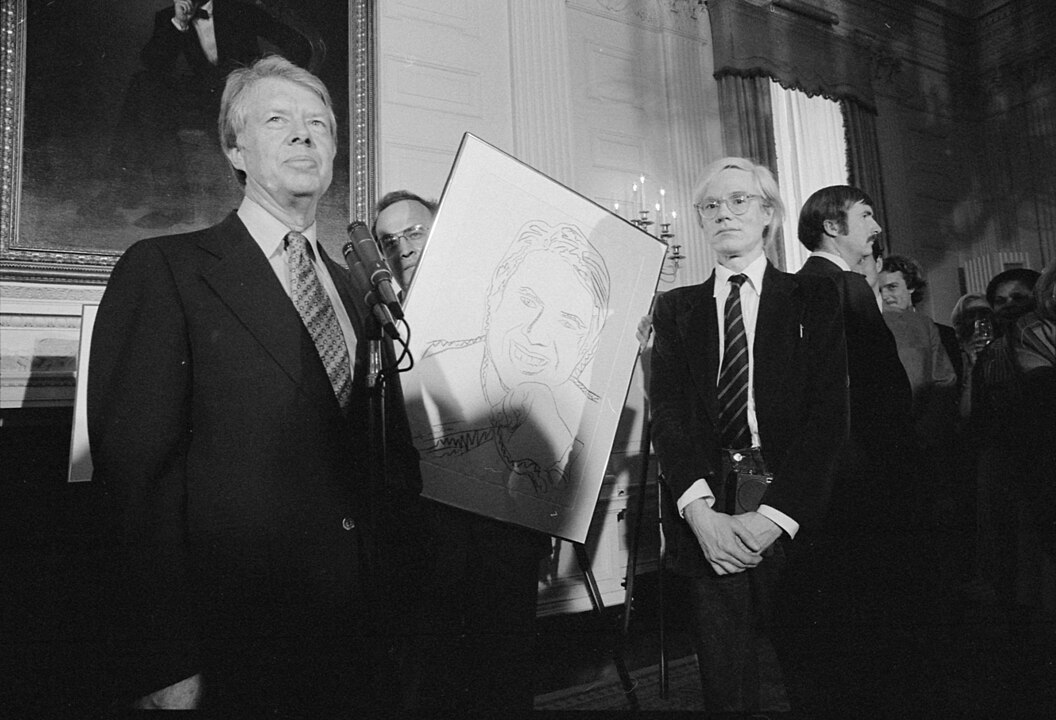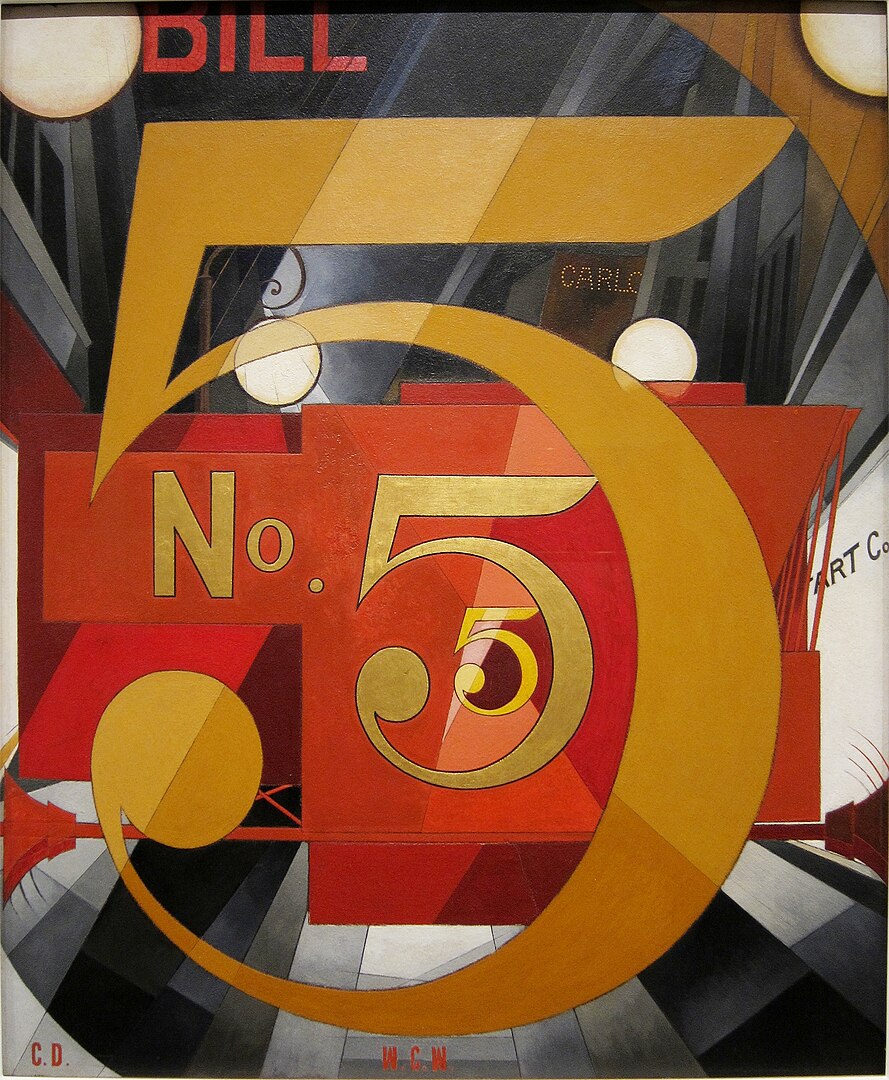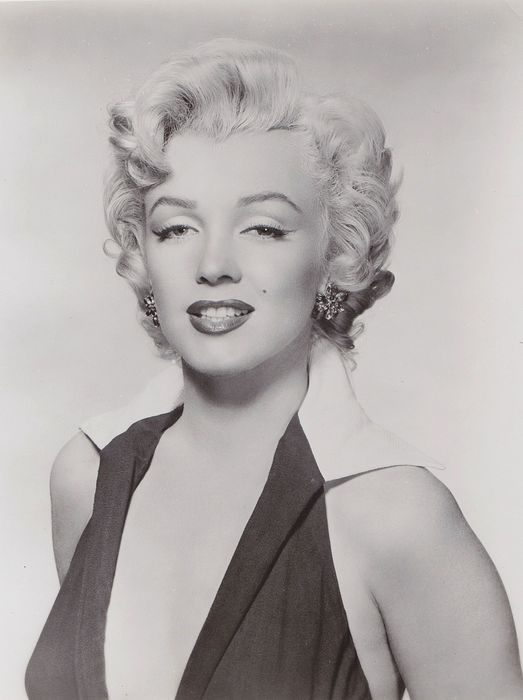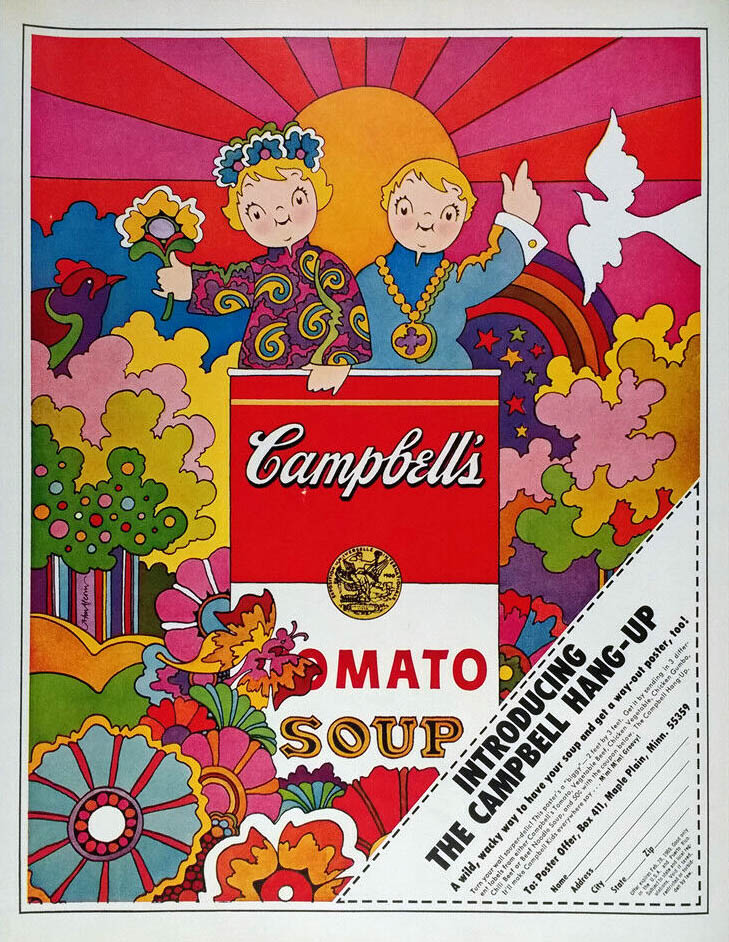In the mid-20th century, a new art movement burst onto the scene, challenging traditional notions of art and culture and leaving an indelible mark on society. This movement, known as Pop Art, brought the mundane and the commercial into the hallowed halls of art galleries. At the forefront of this revolution was Andy Warhol, an enigmatic figure whose work and persona would come to define the ethos of Pop Art. This blog post delves into the impact of Andy Warhol and the Pop Art movement, exploring how they transformed artistic expression and mirrored the cultural shifts of their time.
Andy Warhol – The Icon of Pop Art
Andy Warhol, originally born as Andrew Warhola in the industrial city of Pittsburgh, Pennsylvania, in 1928, embarked on a journey that would eventually redefine the contours of the art world. Initially carving out a niche for himself as a commercial illustrator, Warhol’s artistic trajectory took a pivotal turn as he delved into the vibrant and effervescent world of popular culture. This exploration marked the beginning of an illustrious career that would see Warhol ascend to the zenith of the art world, becoming synonymous with the Pop Art movement.
Warhol’s artistry was distinguished by his audacious use of vivid colors and bold patterns, which became a hallmark of his work. He embraced repetition not merely as a stylistic device but as a profound commentary on the burgeoning consumer culture of his time. This repetition was further accentuated by his innovative use of silkscreen printing, a technique that allowed him to produce art on an industrial scale, mirroring the mass production processes of factories. This methodical approach to art-making led to the creation of his legendary studio, aptly named “The Factory,” which became a cultural epicenter in New York City, attracting a diverse crowd of artists, musicians, and socialites.
Moreover, Warhol’s fascination with celebrity culture and the media landscape of the 1960s played a significant role in his artistic expressions. His portraits of Marilyn Monroe, produced in the wake of her tragic death, encapsulate the ephemeral nature of fame and the commodification of celebrity, themes that were increasingly relevant in the context of American society at the time.
The Essence of Pop Art
The Essence of Pop Art delves into a transformative movement that redefined the art world in the mid-20th century. Emerging amidst the post-war economic boom, Pop Art reflected the rapidly changing society, marked by the rise of consumer culture, mass production, and a media-saturated environment. This artistic phenomenon challenged traditional notions of art, merging the realms of popular culture and fine art to create a vibrant, provocative dialogue.
- Origins and Context: Pop Art first appeared in the late 1950s in the United Kingdom before gaining momentum in the United States in the early 1960s. It was a response not only to the consumerist and media-driven landscape but also to the dominance of Abstract Expressionism in the art world. Artists sought to create work that was more accessible and relatable to the general public, drawing inspiration from the colorful and dynamic imagery of advertising, comic strips, television, and film.
- Key Characteristics and Techniques: Pop Art is characterized by its use of bold colors, clear lines, and often a sense of irony or humor. Artists employed techniques and materials drawn from commercial art and advertising, including silk screening, collage, and the incorporation of photographic images. This approach allowed them to produce art that mirrored the mass-produced, commodified nature of the objects and imagery they depicted.
- Iconic Imagery and Themes: Pop Art is perhaps best known for its focus on mundane or everyday objects—soup cans, soda bottles, and comic strips—elevated to the status of art. This celebration of ordinary consumer goods critiqued and commented on the burgeoning consumer culture, questioning the role and value of art in a consumer-driven society. Moreover, Pop Artists frequently depicted celebrities and icons of popular culture, exploring the fascination with fame and the construction of public personas.
Warhol’s Influence on Art and Artists
Andy Warhol, one of the most influential figures in the visual arts of the 20th century, redefined the boundaries and concepts of art with his innovative approaches and provocative ideas. Warhol’s influence permeates not only the realm of Pop Art but also the broader art world, impacting artists’ perspectives on production, creativity, and the role of art in society.
The Factory – A Nexus of Creativity
Warhol’s studio, known as The Factory, was more than just a physical space for art production. It was a vibrant, dynamic environment that brought together a diverse group of individuals from various disciplines, including artists, musicians, actors, and intellectuals. This eclectic community became the epicenter of a cultural movement, blurring the lines between art, fashion, music, and film. The Factory was emblematic of Warhol’s collaborative spirit and his belief in the power of bringing together creative minds to inspire and influence each other.
Mass Production and the Artistic Process
Warhol’s adoption of silk screen printing as a key component of his artistic methodology was revolutionary. This technique enabled him to replicate images repeatedly, creating series of works that could be produced quickly and in large quantities. This approach challenged traditional views of art as a unique, handcrafted creation, introducing the concept of art as a mass-produced commodity. Warhol’s famous series of Marilyn Monroe portraits, Campbell’s soup cans, and Coca-Cola bottles exemplified this, underscoring the interplay between art, commercialism, and popular culture.
Democratization of Art
By producing art that was accessible and relatable, Warhol played a significant role in democratizing art. His focus on popular culture icons and consumer goods resonated with a wide audience, breaking down the elitist barriers that often surrounded the art world. Warhol’s work invited viewers to reconsider the definition of art and to recognize the artistic value in everyday objects and images from popular culture.
Influence on Subsequent Generations
Warhol’s legacy is evident in the works of many contemporary artists who continue to grapple with themes of consumerism, celebrity culture, and the media. Artists like Jeff Koons, Damien Hirst, and Takashi Murakami, among others, have drawn inspiration from Warhol’s techniques, subjects, and his blurring of art and commerce. Warhol’s influence extends beyond individual artists to impact broader movements and trends within contemporary art, including the use of digital technology and social media to replicate and disseminate art.
Conceptual and Philosophical Impact
Beyond his technical innovations and stylistic contributions, Warhol’s greatest impact may be in his philosophical approach to art. He challenged artists to think differently about creativity, authorship, and the value of art in a consumer-driven society. Warhol’s exploration of celebrity culture and the nature of fame anticipated the obsessions of contemporary society, making his work profoundly relevant in the age of the internet and social media.
Hence, Andy Warhol’s influence on art and artists is profound and multifaceted. He redefined what art could be, how it could be made, and for whom it was intended. His embrace of mass production techniques, his cultivation of a creative community at The Factory, and his philosophical musings on art and culture have left an indelible mark on the art world, shaping the trajectory of contemporary art and continuing to inspire artists to challenge the conventions of their time.
The Cultural Impact of Pop Art
The cultural impact of Pop Art, particularly during its peak in the 1950s and 1960s, was profound and far-reaching, reshaping not only the art world but also societal perceptions of culture, media, and consumerism. As a leading figure, Andy Warhol, along with his contemporaries, propelled this movement into the forefront of cultural discourse, using their art to reflect and critique the rapidly evolving landscape of post-war society.
- Reflection of Societal Changes – Pop Art emerged in a period marked by significant social and technological transformations. The post-war economic boom had led to increased consumerism, with an abundance of products flooding the market and advertising becoming ever more pervasive. Television, in particular, emerged as a powerful medium, shaping public opinion and tastes. Pop Artists seized upon this new visual language, drawing from the imagery of advertisements, comic strips, and television to create works that both mirrored and critiqued the world around them. By doing so, they highlighted the growing influence of media and consumer culture on individual and collective identities.
- Commentary on Media and Fame – Warhol’s fascination with celebrity culture and the mechanics of fame was a central theme in his work, reflecting the burgeoning cult of personality that was being amplified by television and magazines. His portraits of Marilyn Monroe, Elvis Presley, and other icons not only celebrated their status but also underscored the commodification of individuals within the media landscape. Warhol’s art made viewers acutely aware of how media shapes our understanding of fame, success, and value, prompting a reevaluation of the relationship between society and celebrity.
- Bridging High and Low Culture – One of the most significant cultural impacts of Pop Art was its challenge to the traditional distinctions between “high” art and “low” culture. By elevating mundane consumer goods and popular imagery to the status of fine art, Pop Artists questioned the hierarchies that had long governed the art world. This blurring of boundaries made art more accessible and relatable, inviting a broader audience to engage with contemporary art. The movement encouraged people to find artistic value in everyday life and to question the cultural norms that dictate taste and artistic merit.
- Art Democratization – The Pop Art movement’s use of familiar imagery from popular culture and its adoption of techniques such as silk screening played a key role in democratizing art. These methods allowed for the production of art in larger quantities and at a lower cost, making it more accessible to a wider audience. This shift contributed to a broader cultural dialogue around art, inviting engagement from those who may have previously felt excluded from the art world. Pop Art’s accessibility challenged the notion that art was solely the domain of the elite, fostering a more inclusive cultural landscape.
- Lasting Cultural Dialogue – The legacy of Pop Art continues to influence contemporary culture, from advertising and graphic design to fashion and film. Its exploration of consumerism, media saturation, and celebrity culture remains highly relevant, particularly in the age of social media and digital communication. By prompting ongoing dialogue about the role of art in society and the impact of media on our lives, Pop Art has ensured its place as a critical chapter in the story of cultural evolution.
Famous Andy Warhol Artworks
Andy Warhol is renowned for a wide range of iconic artworks that have left a lasting impact on the art world. Here are some of his most famous pieces:
- Campbell’s Soup Cans (1962): This groundbreaking series is one of Warhol’s earliest experiments in Pop Art. Each of the 32 canvases depicts a different variety of Campbell’s Soup, a mundane household item, presented with no hierarchy. This work comments on mass production and consumer culture, challenging traditional art concepts by using commercial imagery.
- Marilyn Diptych (1962): This piece is a tribute to Marilyn Monroe, created shortly after her death. The diptych format, traditionally used in religious art, here contrasts the vibrant, colorful left side with the fading, black and white images on the right, symbolizing Monroe’s mortality and the fleeting nature of fame.
- Gold Marilyn Monroe (1962): In this work, Warhol isolates a single image of Monroe against a gold background, reminiscent of Byzantine religious icons, thus elevating the celebrity to a saint-like status. This juxtaposition highlights the idolization of celebrities and their deification by the media and public.
- Eight Elvises (1963): This artwork showcases multiple silkscreened images of Elvis Presley in a gun-slinging pose from a movie still. The repetition serves to both idolize and commodify the figure of Elvis, reflecting on the repetitive nature of celebrity imagery in media.
- Green Coca-Cola Bottles (1962): By repeating the iconic Coca-Cola bottle, Warhol emphasizes its status as a universal consumer symbol, accessible to everyone regardless of their social status. The work suggests that consumer goods are the great equalizers in society.
- Silver Car Crash (Double Disaster) (1963): Part of a series that dealt with death and disaster, this piece uses a newspaper photo of a car crash, repeated several times. The repetition desensitizes the viewer to the tragedy, mirroring the effect of constant exposure to such images in the media.
- Brillo Boxes (1964): These plywood sculptures, painted to look like commercial Brillo soap pad boxes, question the nature of art and its distinction from everyday objects. Warhol’s Brillo Boxes challenge the viewer to discern between art and commercial packaging, blurring the lines between art and reality.
- Banana (1966): Known for its role as the album cover for The Velvet Underground & Nico, the Banana screen print is a simple yet bold illustration that exemplifies Warhol’s ability to elevate everyday objects to art. The image became an iconic symbol of the 1960s pop culture and underground music scene.
- Mao (1973): In these portraits, Warhol takes the official portrait of Mao Zedong, used in Communist propaganda, and infuses it with irreverent colors and styles, subverting its original serious and political intent. This series comments on the cult of personality and the intersection of politics and art.
- The Last Supper (1986): This series reinterprets Leonardo da Vinci’s famous mural, incorporating commercial logos and price tags alongside the religious imagery. These works, some of Warhol’s last, explore themes of religion, commerce, and iconography, showcasing his continued interest in blending high culture with popular elements.
These artworks exemplify Warhol’s diverse range of subjects and his innovative techniques, from silkscreen printing to replication and use of color, which have cemented his legacy as a leading figure in the Pop Art movement.
Warhol’s Legacy and the Enduring Influence of Pop Art
Andy Warhol’s legacy is a testament to his visionary approach to art and culture, one that has left an indelible mark on the fabric of contemporary society. His innovative merging of art with elements of mass culture and commerce has paved the way for new artistic explorations and has continued to serve as a touchstone for artists, designers, and cultural commentators.
Redefining the Artist’s Role
Warhol transformed the concept of the artist from a solitary creator to a multifaceted cultural influencer. By establishing The Factory, his studio that doubled as a social hub, he blurred the lines between art production and social life, involving a wide array of individuals in his creative process. This approach anticipated the collaborative, interdisciplinary nature of much contemporary art and highlighted the potential for art to emerge from a confluence of diverse ideas and talents.
Influence on Contemporary Culture
Warhol’s fascination with consumerism, fame, and the media prefigured today’s digital age, where social media platforms and the internet have magnified these aspects to unprecedented levels. His art highlighted the commodification of culture and the construction of celebrity, themes that remain acutely relevant in an era dominated by influencers, viral content, and brand culture. Contemporary artists continue to draw on Warhol’s themes, using modern technologies to explore the intersections of art, celebrity, and consumer culture in new and compelling ways.
Impact on Design, Fashion, and Advertising
Pop Art’s aesthetic, characterized by bold colors, repetition, and the incorporation of commercial imagery, has had a lasting influence on design and fashion. Warhol’s work, in particular, can be seen in the playful and irreverent styles that pervade contemporary fashion, graphic design, and advertising. Brands and designers often reference Pop Art to convey a sense of youthfulness, energy, and a tongue-in-cheek critique of consumer culture.
Ongoing Dialogues and Critiques
Warhol’s work continues to provoke discussion and critique, inviting reflections on the nature of art, the role of the artist, and the impact of consumer culture on society. The questions he raised about authenticity, reproduction, and the value of art in a commodified society are as pertinent today as they were during his lifetime. In this way, Warhol’s legacy is not static but evolves as artists and scholars revisit his work and ideas in light of contemporary challenges and technologies.
Conclusion
The impact of Andy Warhol and the Pop Art movement on art and culture is profound and far-reaching. By challenging conventional notions of art and embracing the imagery and ethos of their time, Warhol and his contemporaries transformed the art world and left a lasting legacy on society. Their work continues to inspire and provoke, serving as a mirror to the cultural currents of their era and beyond. In a world increasingly dominated by media and consumer culture, the insights and provocations of Pop Art remain as relevant and vital as ever, inviting us to reflect on the world we inhabit and the values we espouse.




